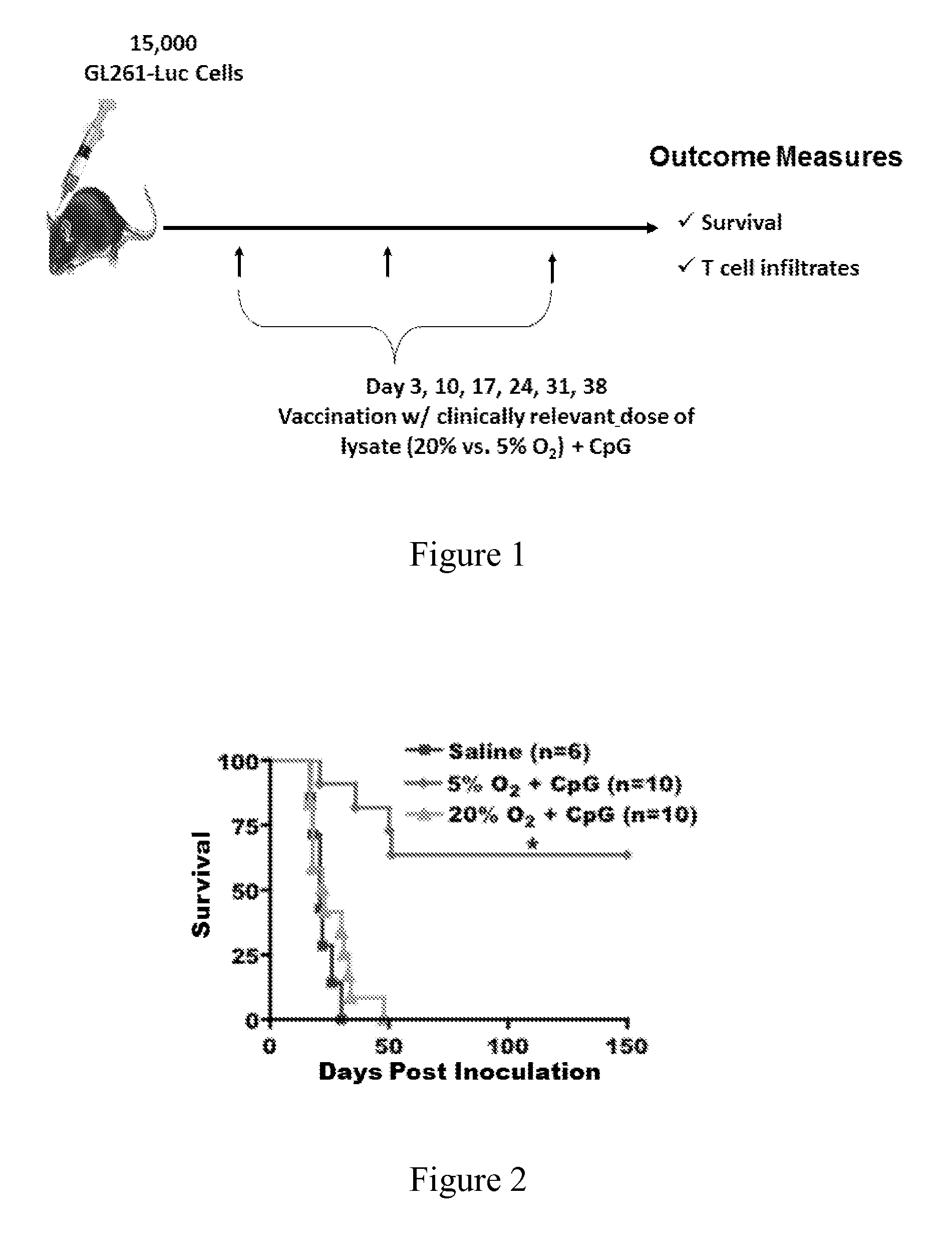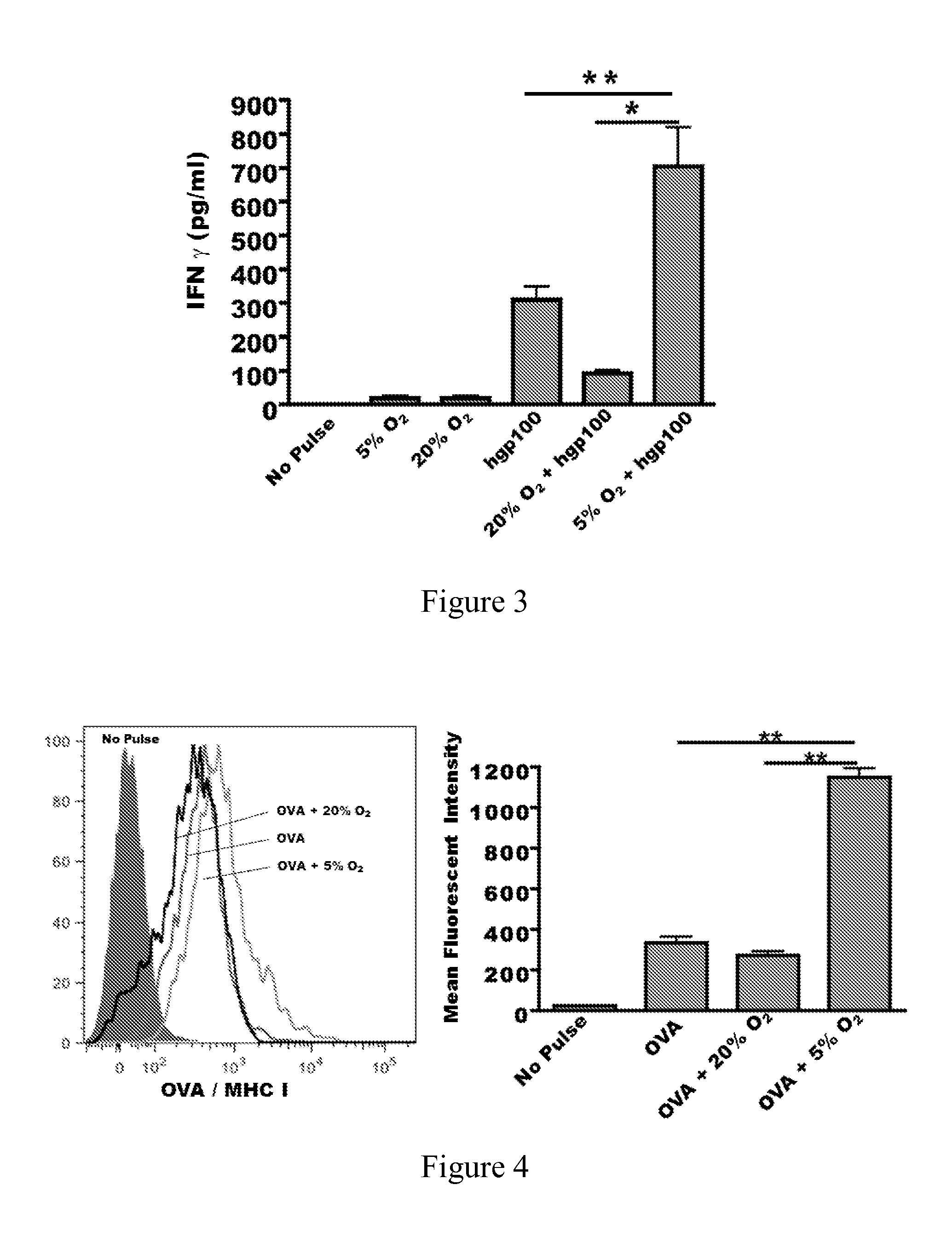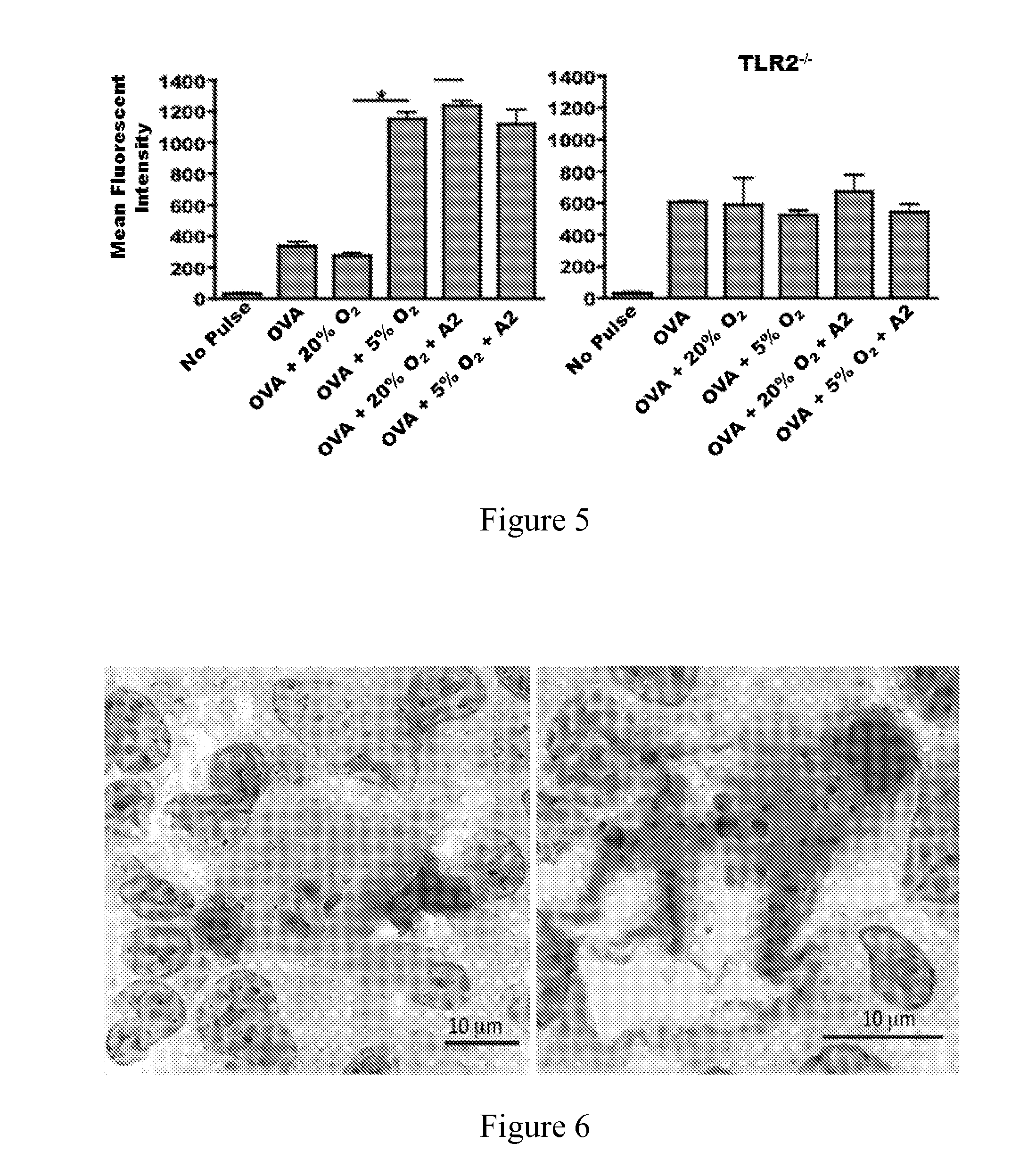Annexin ii compositions and methods
a technology of annexin and composition, applied in the field of annexin ii compositions and methods, can solve the problems of limited treatment options for certain brain tumors, inability to perform surgery, and inability to provide significant long-term survival,
- Summary
- Abstract
- Description
- Claims
- Application Information
AI Technical Summary
Benefits of technology
Problems solved by technology
Method used
Image
Examples
example 1
Immunization Protocol.
[0109]Tumors were implanted into female mice (6-8 weeks old) that were purchased from Jackson Laboratory (Bar Harbor, Me.) and maintained in a specific pathogen-free facility according to the guidelines of the University of Minnesota Animal Care and Use Committee. The GL261 model was established in C57BL / 6 (BL6) mice by inoculation with 15,000 GL261-Luc positive cells in 1 μl of phosphate-buffered saline (PBS). Tumors were implanted stereotactically into the right striatum; coordinates were 2.5-mm lateral, and 0.5-mm anterior of bregma, and 3-mm deep from the cortical surface of the brain. The EMT6 model was established in BALB / c mice by injection of 1×106 EMT6 cells in 50 ml of PBS into the left superior mammary fat pad as described. Tumor cells used to establish both models were cultured in atmospheric oxygen.
[0110]Tumor lysates were prepared by dissociating cells with non-enzymatic cell dissociation buffer (Sigma-Aldrich, St. Louis, Mo.), washed three times ...
example 2
[0119]BL6 mouse bone derived dendritic cells were plated at a concentration of 5×105 cells / well in a 96-well plate in complete RPMI 1640 media. Splenocytes were pulsed with 10 μg of the indicated tumor lysate, with annexin tetramer added to cells prior to derivation of lysates (A2 mix), annexin II tetramer (A2t), or purified 32 kD Annexin II (A2), with or without 10 μg of human gp10025-33 peptide (gp100; KVPRNQDWL, SEQ ID NO:2), and incubated for 24 hours. CD8+ T lymphocytes were purified from Pmel mouse splenocytes using negative immunomagnetic selection according to the manufacturer's protocol (Miltenyi Biotec, Bergisch-Gladbach, Germany). Purity was confirmed to be greater than 95% by flow cytometry; 2×105 purified Pmel CTLs were co-cultured with splenocytes for 48 hours. Forty-eight hours after co-culture, IFN-γ was quantified in the tissue culture supernatant using a flow cytometric bead array. Results are shown in FIG. 9. The y-axis reflects relative IFN-γ secretion as an indi...
example 3
Preparation of Annexin II Fusion Peptides
[0120]Annexin II fusion peptides are generated as described in Li et al., 2003 J. Immunother. 26:320-331.
[0121]Briefly, the Annexin II coding sequence (SEQ ID NO:4) is genetically linked, using standard recombination techniques, to fusion partner TNT. TNT is an antibody that targets tumors by binding to DNA exposed in necrotic zones.
[0122]Construction and expression of the fusion peptide is performed using a commercially available cloning kit and expression plasmids (Glutamine Synthetase Gene Amplification System, Lonza Biologics, Inc., Slough, UK). A plasmid carrying the gene encoding the light chain of TNT and a separate plasmid carrying the gene encoding the heavy of TNT are prepared. The annexin II coding sequence is inserted into the N-terminus of the TNT heavy chain gene under the control of an antibody leader sequence using standard recombination techniques. This TNThc-A2 fusion gene is inserted into a commercially available expression...
PUM
| Property | Measurement | Unit |
|---|---|---|
| volume | aaaaa | aaaaa |
| volume | aaaaa | aaaaa |
| thick | aaaaa | aaaaa |
Abstract
Description
Claims
Application Information
 Login to View More
Login to View More - R&D
- Intellectual Property
- Life Sciences
- Materials
- Tech Scout
- Unparalleled Data Quality
- Higher Quality Content
- 60% Fewer Hallucinations
Browse by: Latest US Patents, China's latest patents, Technical Efficacy Thesaurus, Application Domain, Technology Topic, Popular Technical Reports.
© 2025 PatSnap. All rights reserved.Legal|Privacy policy|Modern Slavery Act Transparency Statement|Sitemap|About US| Contact US: help@patsnap.com



